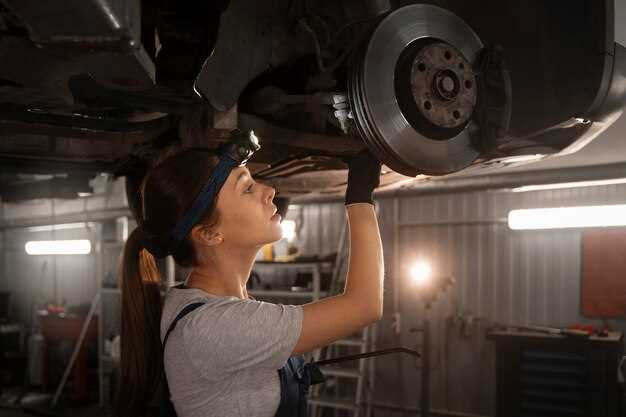
Maintaining the braking system of your vehicle is crucial for both safety and performance. In vehicles equipped with Anti-lock Braking Systems (ABS), proper brake bleeding requires special attention to ensure all air is removed from the brake lines. Air trapped within these lines can lead to a spongy brake feel and diminished braking power, which can significantly impact driving safety.
The process of bleeding brakes on ABS vehicles differs from that of conventional braking systems due to the additional complexity introduced by the ABS module. It is essential to follow a systematic approach to avoid potential issues. Understanding the specific steps involved in this process not only enhances vehicle safety but also preserves the integrity of the ABS system itself.
This article will provide a detailed guide on the correct procedures for bleeding brakes on ABS vehicles. By following these steps carefully, you will ensure optimal braking performance and enhance your vehicle’s safety. Whether you are a seasoned mechanic or an enthusiastic DIYer, these instructions will help you navigate this essential maintenance task with confidence.
Understanding the ABS System and Its Unique Requirements

The Anti-lock Braking System (ABS) is a crucial safety feature in modern vehicles designed to prevent wheel lockup during hard braking. This system enhances vehicle control and reduces the stopping distance on slippery surfaces. To effectively maintain ABS functionality, it’s essential to understand its components and specific brake bleeding requirements.
- ABS Components:
- Wheel Speed Sensors: These sensors monitor the speed of each wheel, providing real-time data to the ABS control module.
- ABS Control Module: It processes signals from the wheel speed sensors and regulates brake pressure to prevent locking.
- Hydraulic Control Unit (HCU): The HCU manages brake fluid flow between the brake master cylinder and the individual brake calipers.
- Importance of Proper Brake Bleeding:
- Air trapped in the brake lines can lead to a spongy brake pedal and reduced braking efficiency.
- For ABS vehicles, removing air from the system is more complex and requires a systematic approach.
- Improper bleeding can compromise the functionality of the ABS, leading to potential safety hazards.
- Unique Requirements for ABS Brake Bleeding:
- Manual Bleeding: It often requires starting with the furthest brake caliper from the master cylinder and moving sequentially towards the closest one.
- Using a Scan Tool: Some ABS systems need a scan tool to activate the ABS pump and valves, allowing trapped air to escape effectively.
- Follow Manufacturer Guidelines: Always refer to the vehicle’s service manual for specific bleeding procedures and torque specifications.
Understanding these ABS system components and unique bleeding requirements is vital for ensuring safe and effective braking performance. Regular maintenance and proper brake bleeding will help maintain the integrity and functionality of the ABS system, enhancing overall vehicle safety.
Necessary Tools and Equipment for Brake Bleeding
To effectively bleed the brakes on ABS vehicles, having the right tools and equipment is essential. This ensures not only the proper removal of air from the brake lines but also the maintenance of brake system integrity.
The primary tool required is a brake bleeder kit. This can be a simple one-way valve bleeder or a more complex vacuum bleeder. One-way valve kits allow for air to escape without allowing fluid to flow back, while vacuum bleeders use suction to remove air more efficiently.
Additionally, you will need a brake fluid reservoir container to catch any fluid that escapes during the bleeding process. This helps maintain a clean workspace and ensures that you do not lose excess brake fluid, which can cause additional issues.
A line wrench or a standard wrench is crucial for loosening and tightening the bleeder screws without rounding them off. Using the correct size wrench will prevent damage to the screws, which can lead to costly repairs.
Another important tool is a pair of gloves. Brake fluid is corrosive and can damage skin, so wearing gloves is essential for safety. Also, safety goggles should be used to protect your eyes from splashes.
It is also advisable to have a funnel on hand. This will assist in adding new brake fluid to the reservoir without spilling, keeping the area clean and ensuring that the correct fluid level is maintained throughout the bleeding process.
Finally, it is helpful to have a helper nearby. An extra set of hands can be invaluable during the bleeding process, as one person can operate the brake pedal while the other monitors fluid levels and acts at the bleeder screw.
Step-by-Step Process for Bleeding ABS Brakes Safely

Begin by gathering the necessary tools and materials: a brake bleeder kit, brake fluid compatible with your vehicle, a wrench, a clear plastic tube, and a container to catch the old fluid. Ensure that your vehicle is parked on a level surface and the engine is off.
Next, identify the brake bleeder valves on each brake caliper. Start with the wheel farthest from the master cylinder, typically the passenger side rear wheel. Remove the wheel to gain access to the brake caliper. Clean the bleeder valve with brake cleaner to remove any dirt and debris.
Connect the clear plastic tube to the bleeder valve and place the other end into the container to catch the brake fluid. This setup will help you observe the fluid flow and avoid mess. Loosen the bleeder valve by turning it counterclockwise with the wrench. Make sure not to turn it too much to prevent damage.
Have an assistant pump the brake pedal several times and then hold it down. While the pedal is pressed, open the bleeder valve slightly to allow air and old fluid to escape. Close the valve before your assistant releases the brake pedal to prevent air from entering the system. Repeat this process until you observe clear fluid without any bubbles coming through the tube.
Continue to bleed each brake caliper in the correct order: passenger side rear, driver side rear, passenger side front, and finally driver side front. Monitor the brake fluid level in the master cylinder reservoir and refill it as needed to prevent it from running dry during the bleeding process.
After bleeding all four brakes, ensure to test the brake pedal for firmness. If the pedal feels spongy, there may still be air in the system, requiring a repeat of the bleeding process on the affected caliper.
Once satisfied, remove the tube and securely tighten all bleeder valves. Clean any spilled brake fluid, as it can damage vehicle surfaces. Reinstall the wheels, lower the vehicle, and conduct a final test drive to ensure proper function.




